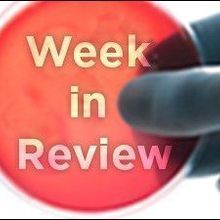Login
Subscribeevolutionary biology, evolution, genetics & genomics

Infographic: History of Ancient Hominin Interbreeding
Jef Akst | Sep 1, 2019 | 3 min read
See when and where our ancestors may have interbred with Neanderthals and Denisovans.

Modern Synthesis, 1937
Chia-Yi Hou | Sep 1, 2019 | 2 min read
Theodosius Dobzhansky’s work in population genetics influenced how genetics and natural selection were combined in evolutionary biology.

Elusive Asgard Archaea Finally Cultured in Lab
Nicoletta Lanese | Aug 12, 2019 | 3 min read
The 12-year-long endeavor reveals Prometheoarchaeum as a tentacled cell, living in a symbiotic relationship with methane-producing microbes.

Ancient Genomes Reveal Clues About Native Americans’ Past
Jef Akst | Jun 6, 2019 | 2 min read
Sequences from dozens of ancient remains from Siberia reveal the closest ancient relative of Native Americans found outside of North America.

Opinion: Individuals Are Greater Than the Sum of Their Parts
Itzhak Mizrahi and Fotini Kokou | Mar 1, 2019 | 2 min read
The study of evolution requires consideration of organisms’ microbiomes.

Infographic: How Cities Influence Evolution
Catherine Offord | Jan 1, 2019 | 2 min read
Urban environments are driving genetic changes in resident species through multiple mechanisms, from establishing gene flow barriers to exerting novel selection pressures.

Cities Can Serve as Cauldrons of Evolution
Catherine Offord | Jan 1, 2019 | 10+ min read
From changes in gene flow to adaptation, the effects of urbanization are shaping the evolutionary trajectories of plants and animals.

Robert Baker, Bat Biologist, Dies
Diana Kwon | Apr 5, 2018 | 2 min read
The Texas Tech University professor also investigated the effects of the Chernobyl disaster on surrounding wildlife.

How an Invasive Bee Managed to Thrive in Australia
Ben Andrew Henry | Jan 1, 2017 | 4 min read
The Asian honeybee should have been crippled by low genetic diversity, but thanks to natural selection it thrived.

Week in Review: September 5–9
Jef Akst | Sep 8, 2016 | 2 min read
Environmental magnetite in the human brain; prion structure takes shape; watching E. coli evolve in real time; learning from others’ behavior

On Becoming Human
Mary Beth Aberlin | Aug 1, 2016 | 3 min read
Some thoughts on going to the Galápagos

Decoding Human Accelerated Regions
Katherine S. Pollard | Aug 1, 2016 | 10 min read
Do the portions of our genomes that set us apart from other animals hold the secret to human evolution?

Contributors
The Scientist | Aug 1, 2016 | 3 min read
Meet some of the people featured in the August 2016 issue of The Scientist.

Understanding Human Accelerated Regions
Katherine S. Pollard | Jul 31, 2016 | 1 min read
Fast-evolving regions of the human genome differentiate our species from all other mammals.

Nailing Down HAR Function
Katherine S. Pollard | Jul 31, 2016 | 1 min read
A remaining challenge in the study of human accelerated regions (HARs) is establishing their specific functions during development and other biological processes.

Feeling Around in the Dark
Catherine Offord | May 1, 2016 | 4 min read
Scientists work to unlock the genetic secrets of a population of fruit flies kept in total darkness for more than six decades.
Tracking Zika’s Evolution
Jef Akst | Apr 15, 2016 | 2 min read
Sequence analysis of 41 viral strains reveals more than a half-century of change.

Capsule Reviews
Bob Grant | Mar 1, 2016 | 3 min read
Herding Hemingway's Cats, Hair: A Human History, Restless Creatures, and The Mind Club

Ancient Irish
Jef Akst | Dec 30, 2015 | 2 min read
The genomes of a 5,200-year-old woman and three 4,000-year-old men yield clues about the founding of Celtic populations.
